Let's Go Under Water.... (Page Two)
Did You Know? - B-427 was a Project 641 (Foxtrot-class) diesel-electric attack submarine of the Soviet Navy. The "B" (actually "Б") in her designation stands for большая (bolshaya, "large"). Foxtrots are among the largest non-nuclear submarines ever built. Commissioned in 1971, the submarine operated with the Russian Pacific Fleet until decommissioning in 1994. The boat was sold to a group of Australian buisnessmen, who converted her into a museum vessel and placed on display at the Australian National Maritime Museum (under the name Foxtrot-540) from 1995 until 1998, then at Long Beach, California (under the name Povodnaya Lodka B-427 Scorpion) in 1998.

Awaiting our arrival

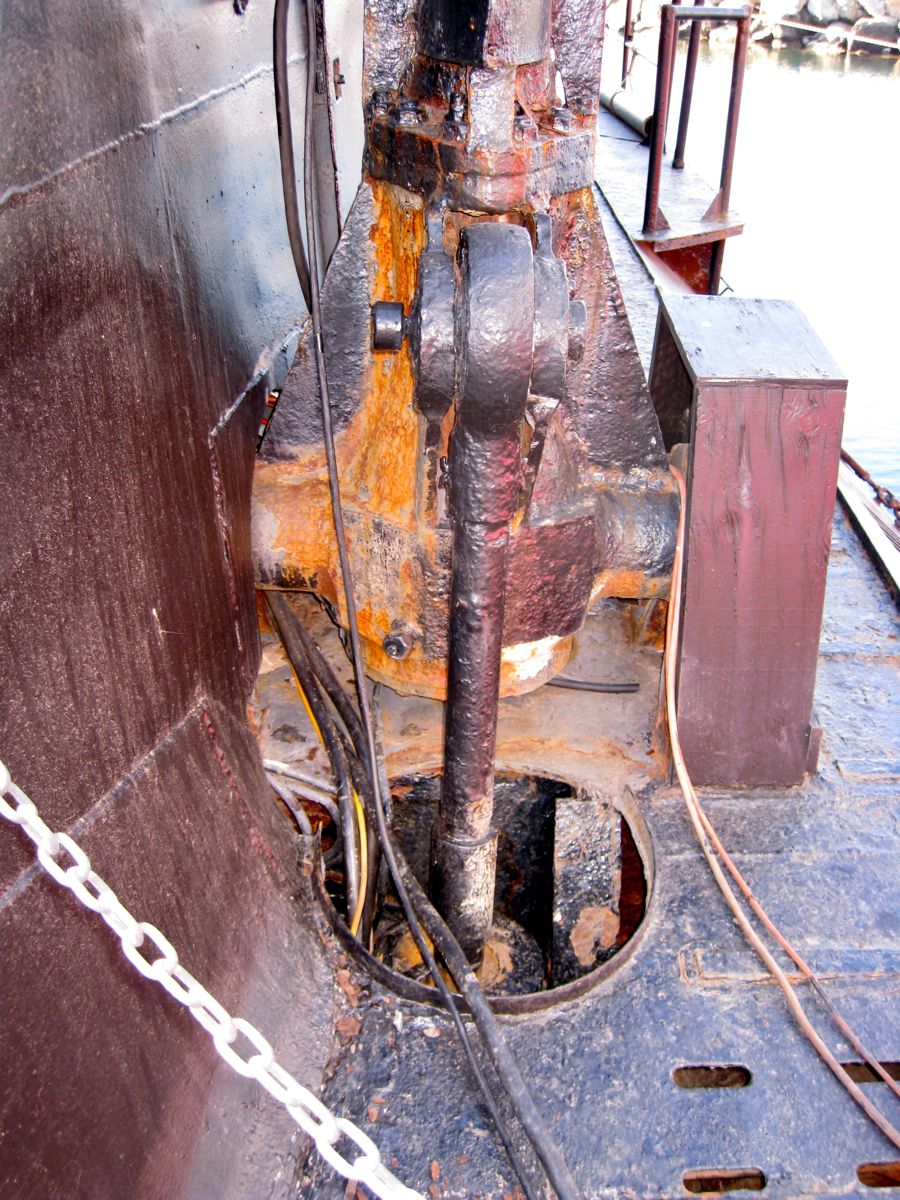
The radio and air tube was hydraulically lifted into place or folded when under water

Daddy Bob is ready to go down into the sub
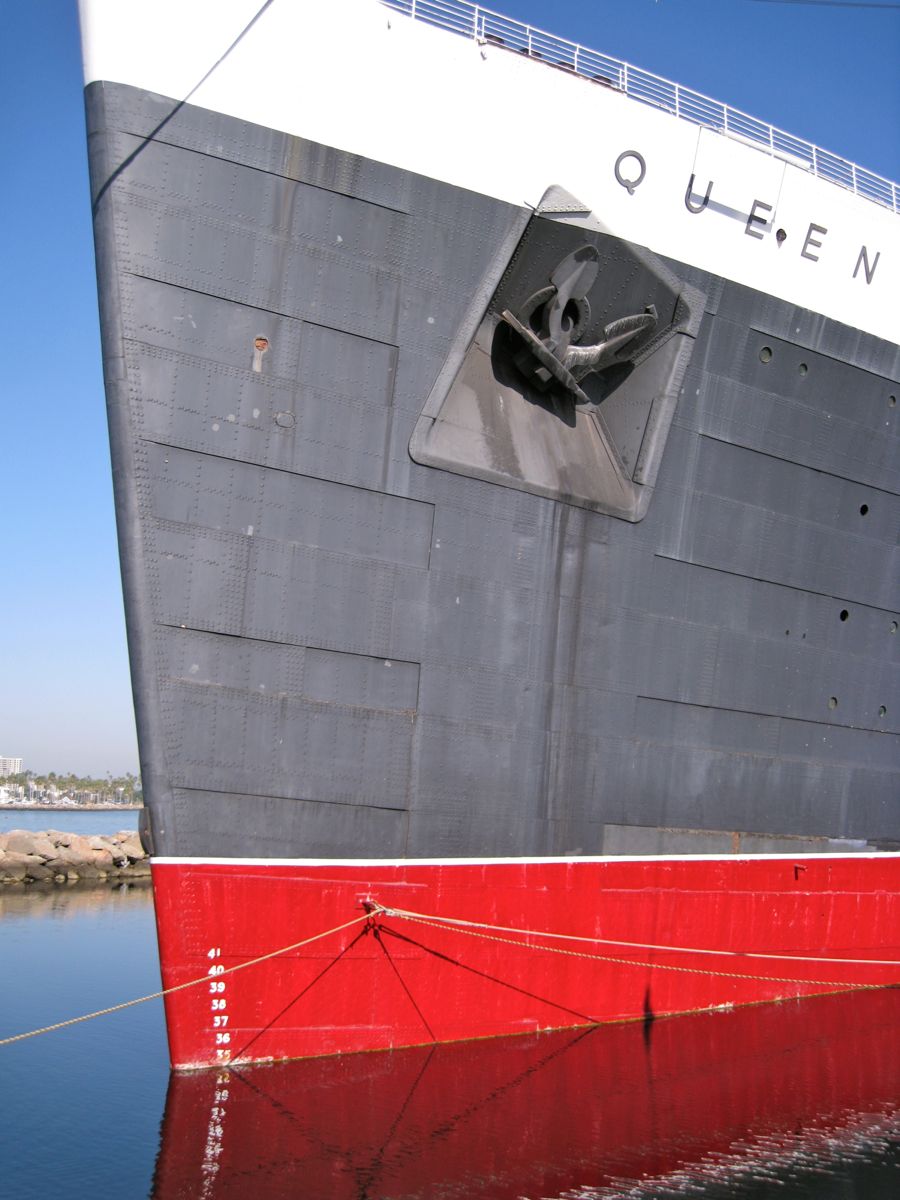
The Queen looked pretty big from the deck of the sub
Into The Belly Of The Beast We Go
Did You Know? - Her keel was laid down on 10 April 1971 at Sudomekh Shipyard of Leningrad. It was launched on 22 June 1971 and commissioned on 4 December 1971. For twenty-two years B-427 patrolled the Pacific, protecting the ballistic missile submarine bastions of the Pacific Fleet while based out of Vladivostok, Russia with the exception of a few temporary postings as part of the Soviet Submarine Squadron that was for a time based at the former US Navy base at Cam Ranh Bay, Vietnam. Such postings were normally for a period of between 8 to 12 months before returning to Vladivostok.
In 1989, B-427 was returning to Vladivostok from Vietnam when it ran into a typhoon. A mechanical breakdown that could not be fixed in time prevented the sub from diving. The storm battered the boat, destroying the light hull and damaging the ballast tanks and high pressure air bottles. B-427 was taken back to Vladivostok where it was repaired and refitted with a new light hull.

Vlick to see full sized plans (6700px x 3400px)
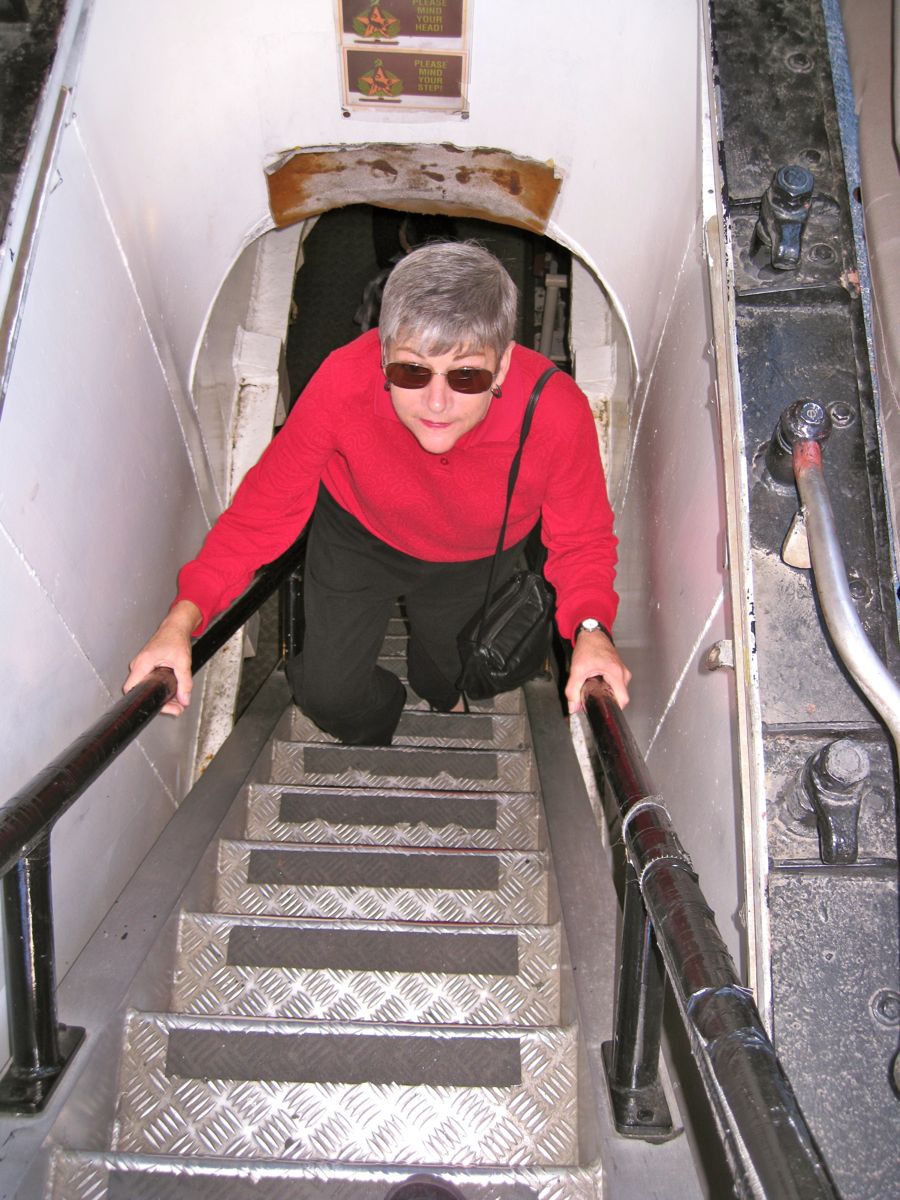
It's easier to back down the ladder....
Compartment #1 - Forward Torpedo Room
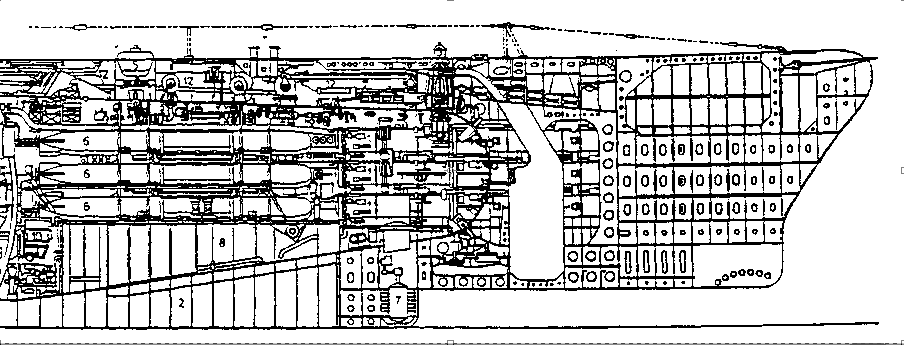
The "business end" were torpedoes are ;auanched

Six tubes face forward
Did You Know? - The modern torpedo (historically called an automotive, automobile, locomotive or fish torpedo; colloquially called "fish") is a self-propelled missile weapon with an explosive warhead, launched above or below the water surface, propelled underwater towards a target, and designed to detonate either on contact with it or in proximity to it.
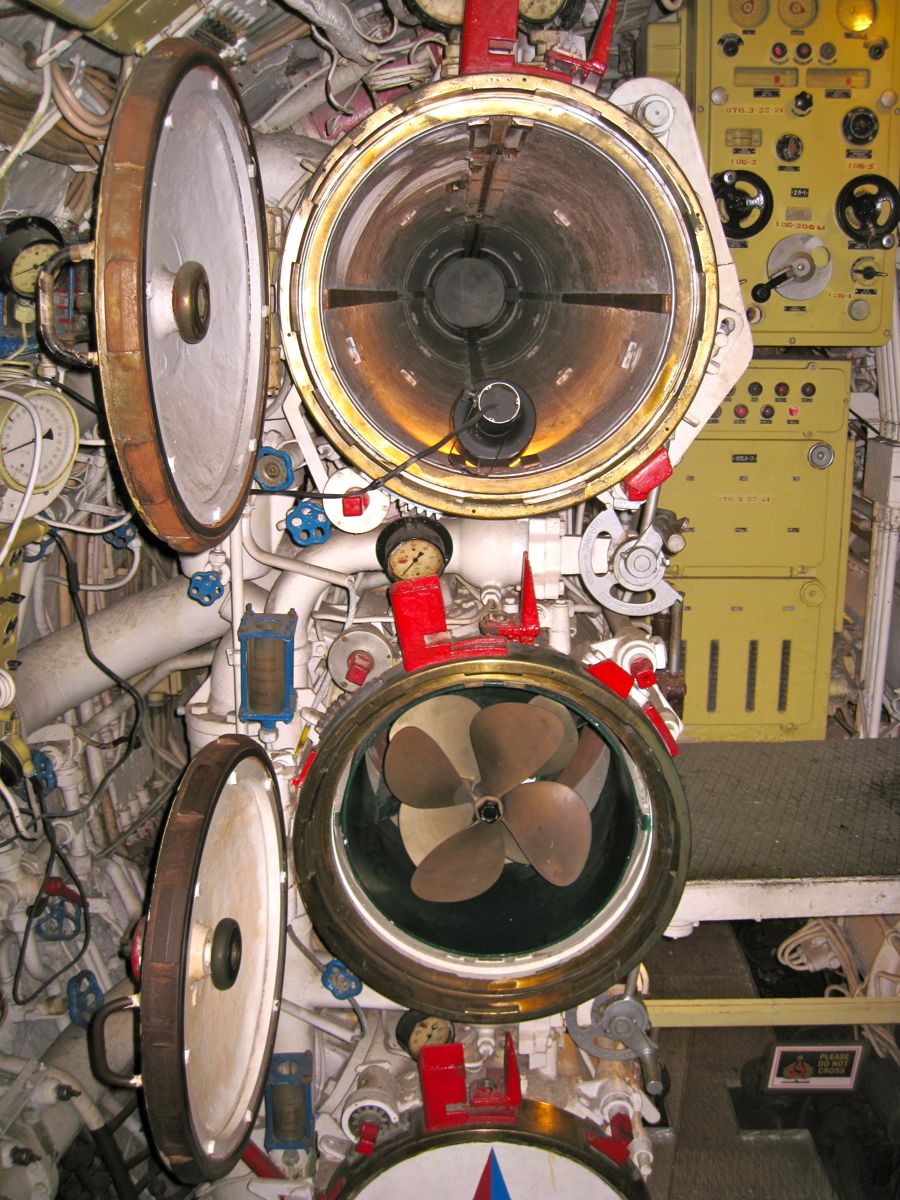
HJigh pressure airpushed the torpedos out of the tubes
Did You Know? - Torpedoes may be aimed at the target and fired unguided, similarly to an artillery shell, or they may be guided onto the target. They may be guided automatically towards the direction in which the target is detected by some procedure, e.g. sound it produces (homing), or by the operator, typically via commands sent over a signal-carrying cable (wire guidance).

Russian navy uniforms
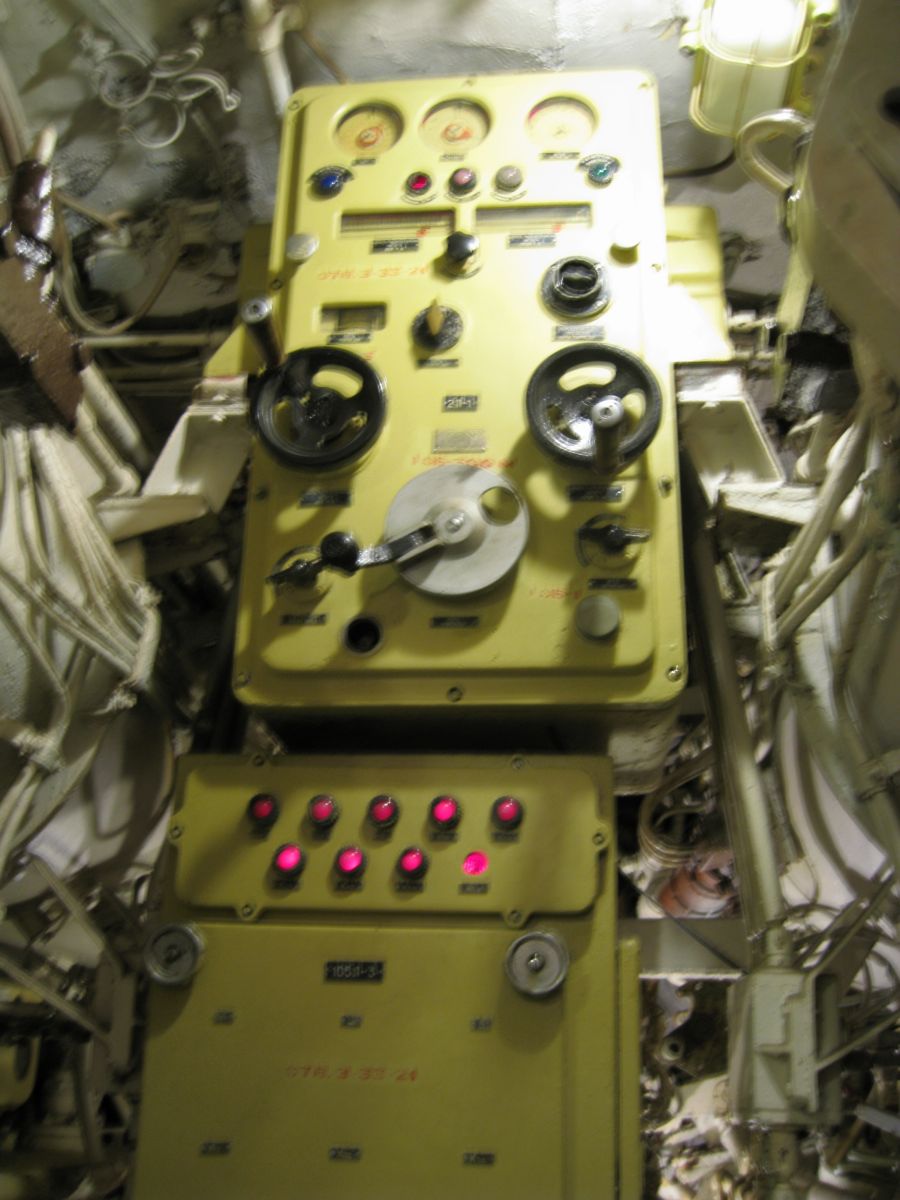
Torpedo steering device
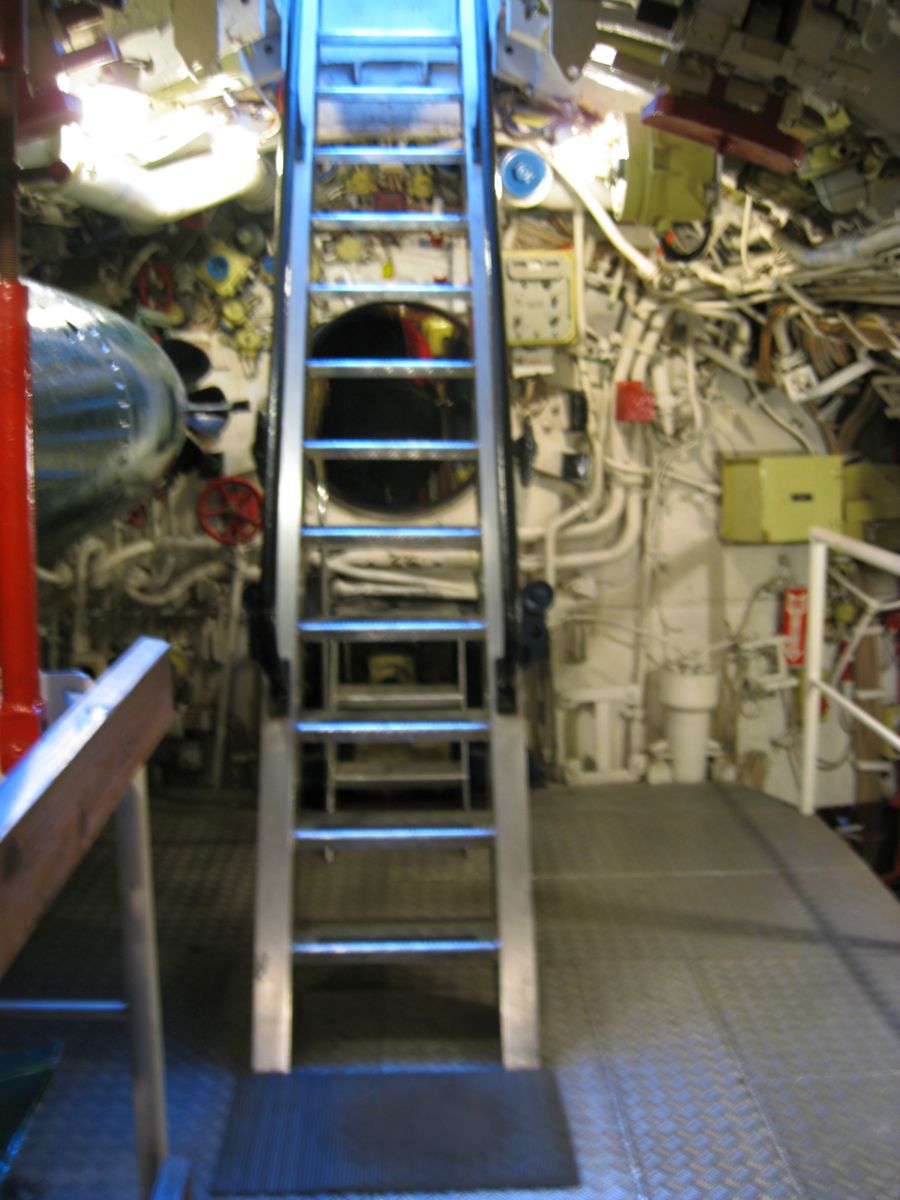
The ladder we used to come down into the torpedo room
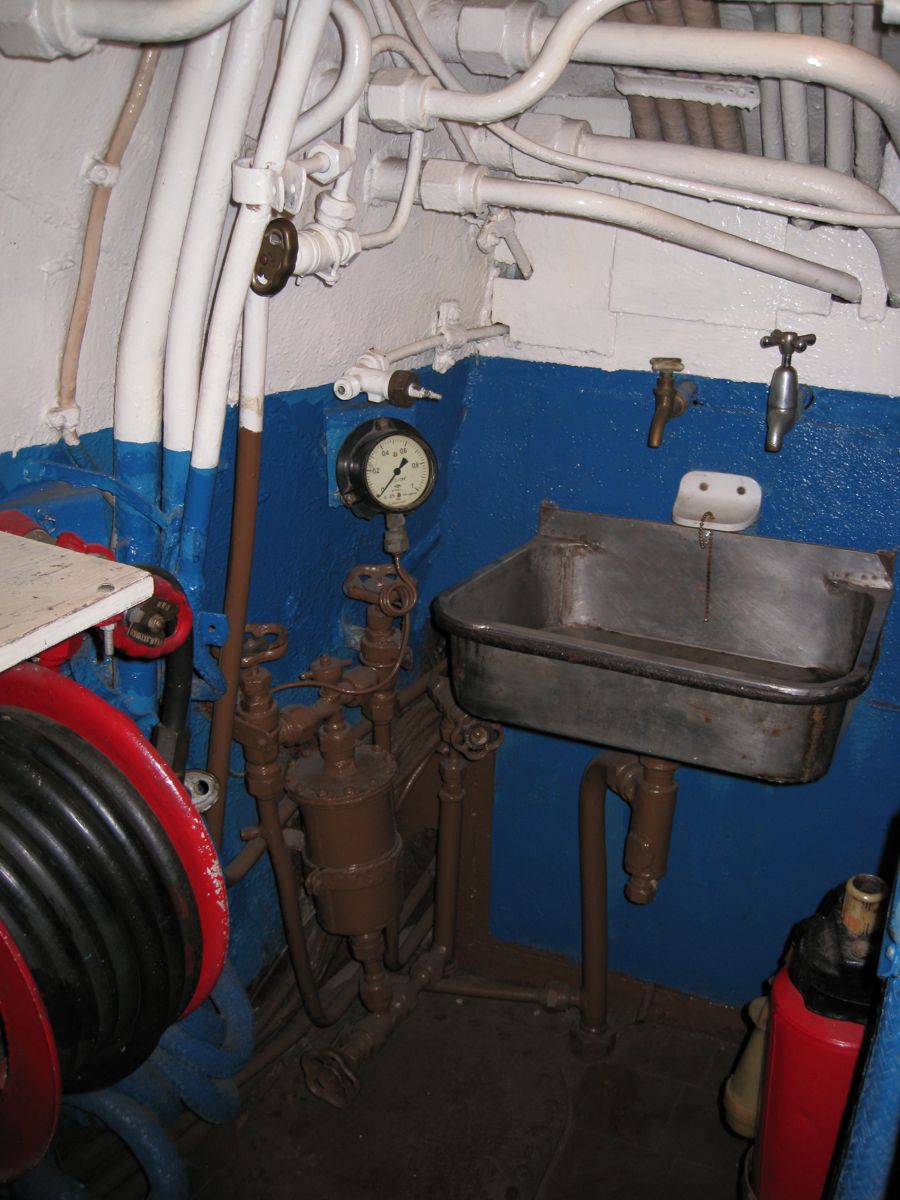
Cleanup and firefighting area
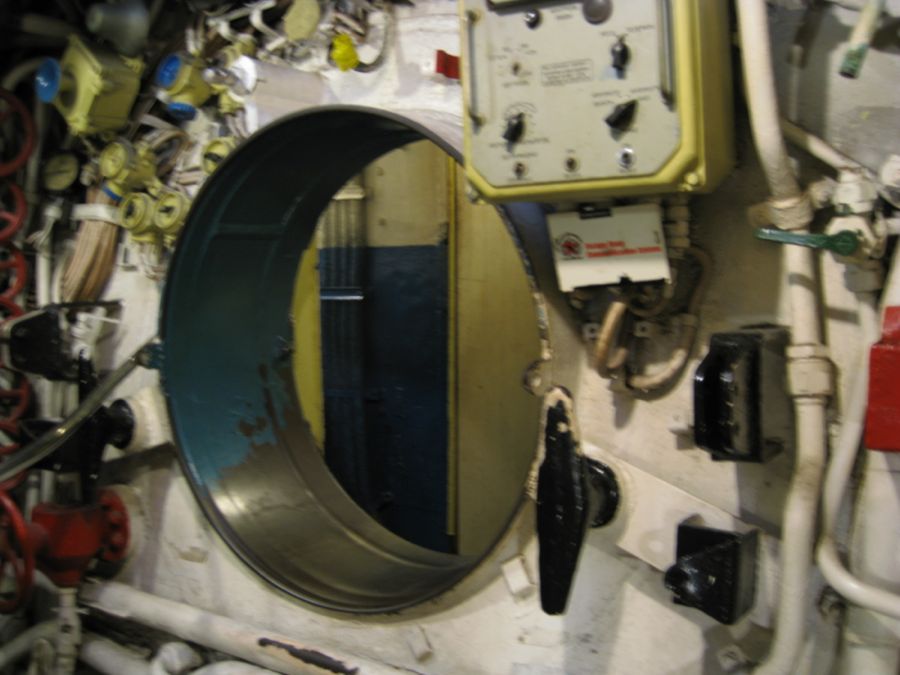
Watertight doors can sealed off and entire compartment if needed
Compartment Two - Officers Quarters
Did You Know? - The first Foxtrot was laid down in 1957 and commissioned in 1958 and the last was completed in 1983. A total of 58 were built for the Soviet Navy at the Sudomekh division of the Admiralty Shipyard (now Admiralty Wharves), St. Petersburg.

Officers quarters (see the battery compartments below?)
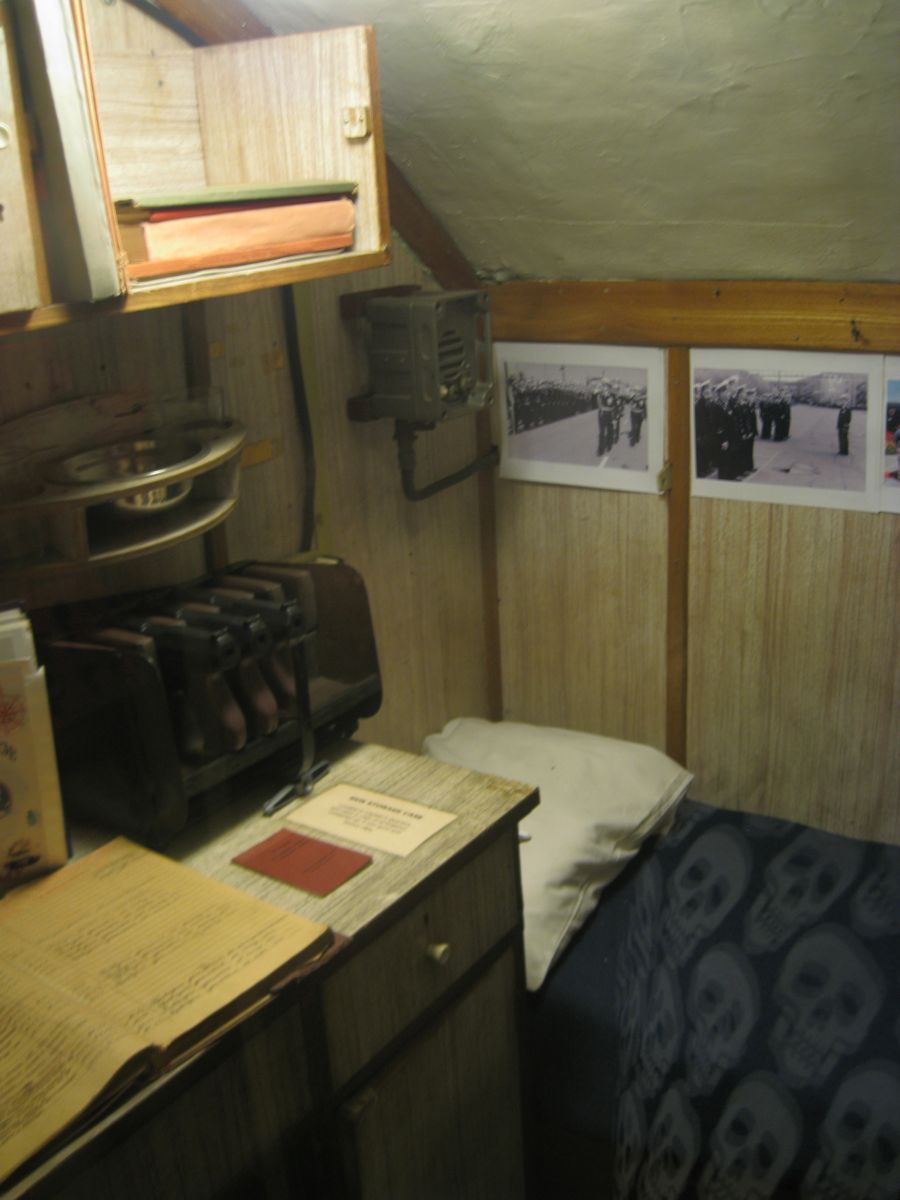
The captains quarters

Sonar room adjacent to the captain for quick access
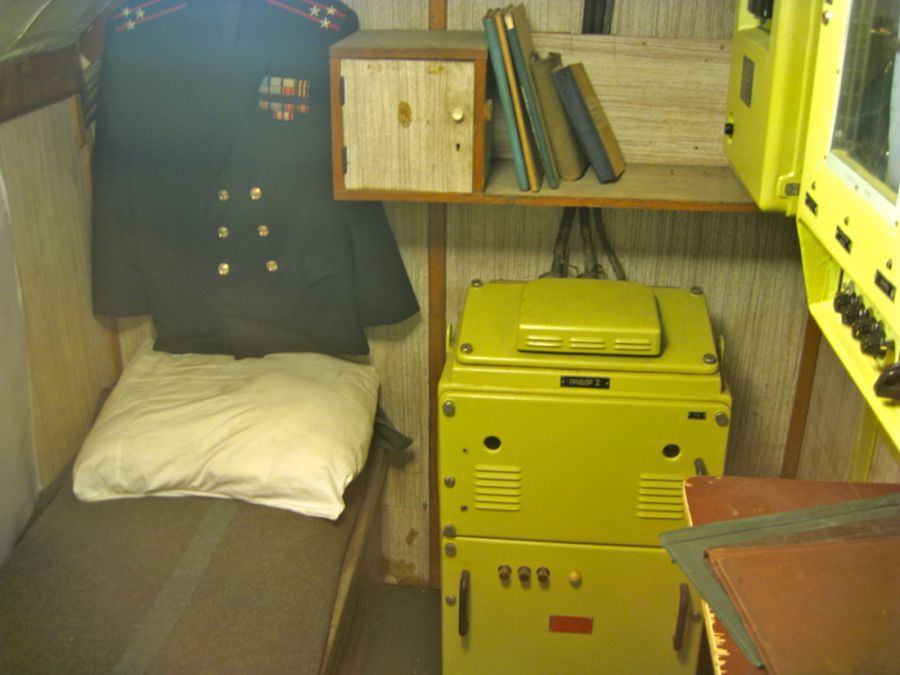
Second in command... The political officer

Robin snaps a pictures of the ward room

Also doubles as the operating table.... Ouch

Radio Officers cabine

One of two heads on board.... Double ouch
Compartment # - The "Bridge" Or Command Center
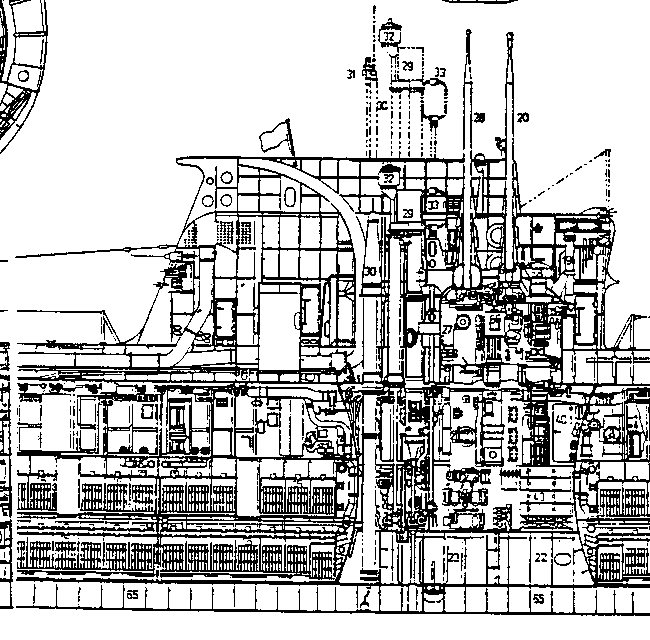
The conning tower is directly above the command center
Did You Know? - The conning tower of a submarine was a small watertight compartment within its sail (or fin in British usage) equipped with instruments and controls and from which the periscopes were used to direct the boat and launch torpedo attacks. It should not be confused with the submarine's control room, which was directly below it in the main pressure hull; or the bridge, a small exposed platform in the top of the sail. As improvements in technology allowed the periscopes to be made longer—then to be eliminated altogether, as in the Virginia-class—it became unnecessary to raise the conning station above the main pressure hull. The additional conning tower pressure hull was eliminated and its functions were added to the command and control center. Thus it is incorrect to refer to the sail of a modern submarine as a conning tower.

Radar room
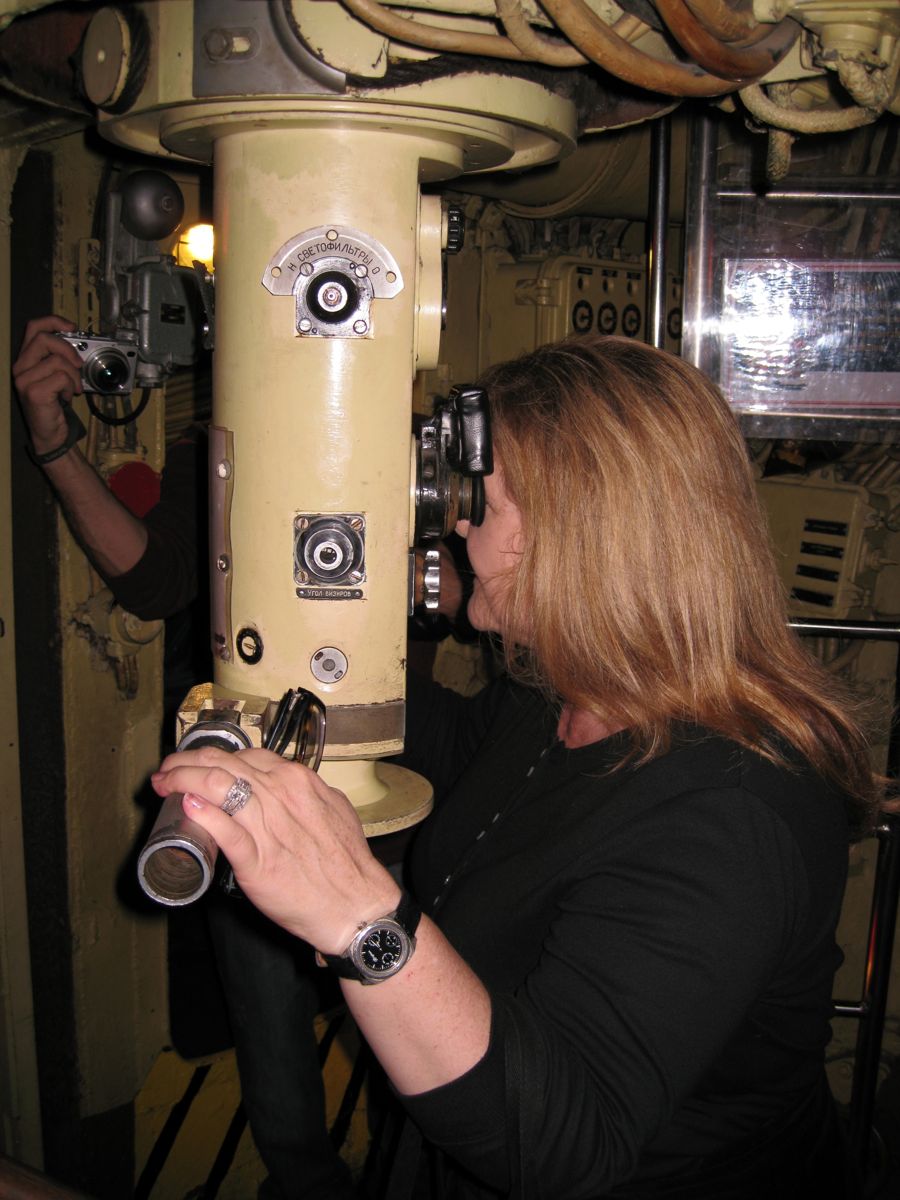
Robin is trying to sink the Queen Mary

Sue is looking at the main gyrocompass - Do NOT turn any of the valves

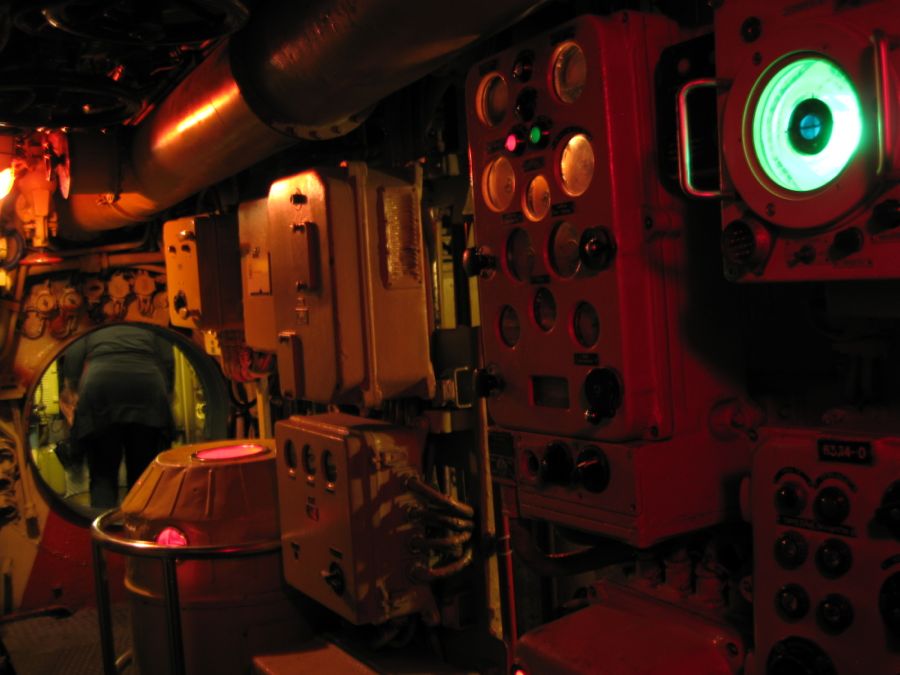
Usually kept dark and the crew adjusts as needed
Did You Know? - A gyrocompass is similar to a gyroscope . It is a compass that can find true north by using an electrically powered, fast-spinning gyroscope wheel and frictional or other forces in order to exploit basic physical laws and the rotation of the Earth. Gyrocompasses are widely used on ships . Marine gyrocompasses have two main advantages over magnetic compasses :
- they find true north, i.e., the point of the Earth's rotational axis on the Earth's surface, as opposed to magnetic north , –an extremely important aspect in navigation , and
- they are unaffected by external
magnetic fields
which deflect normal compasses, such as those created by ferrous metals in a ship's hull.
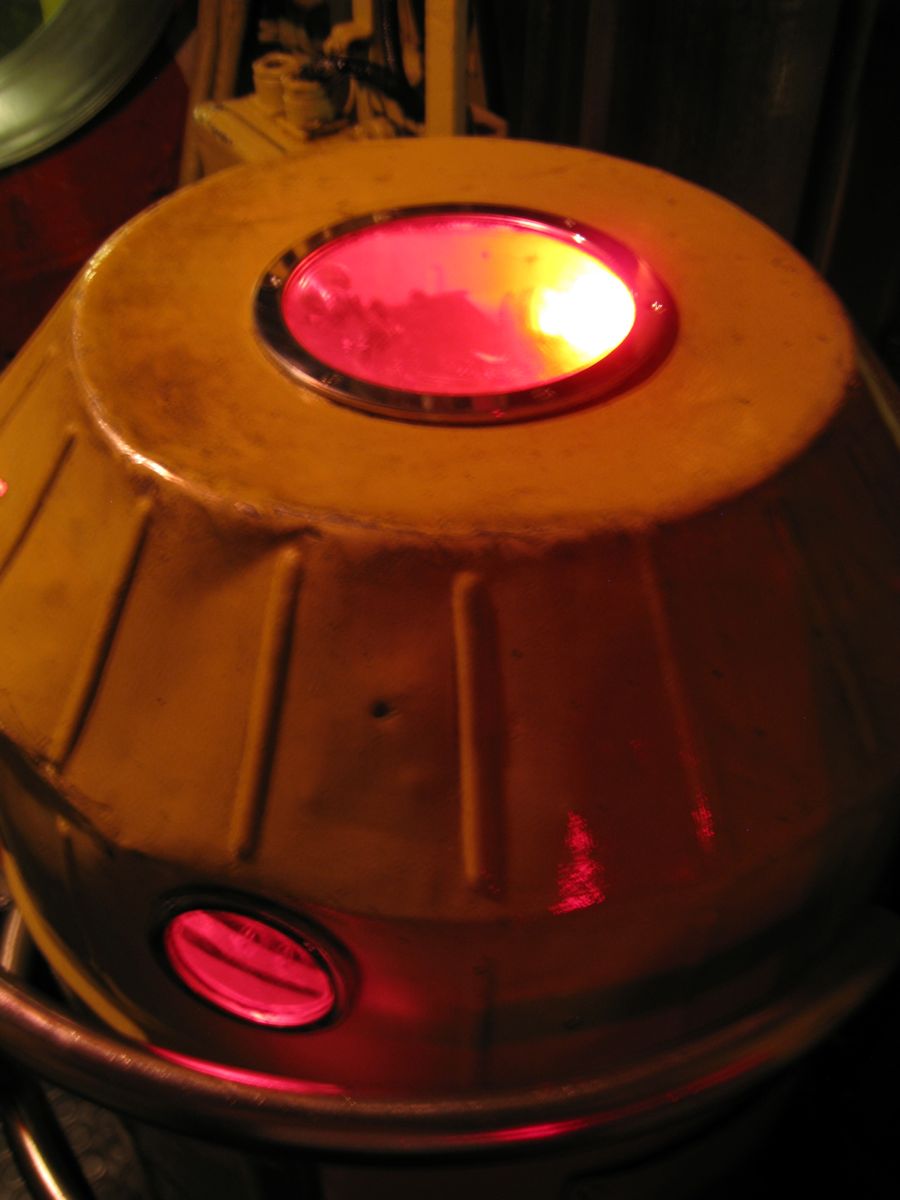
An erie glow from the gyro compass
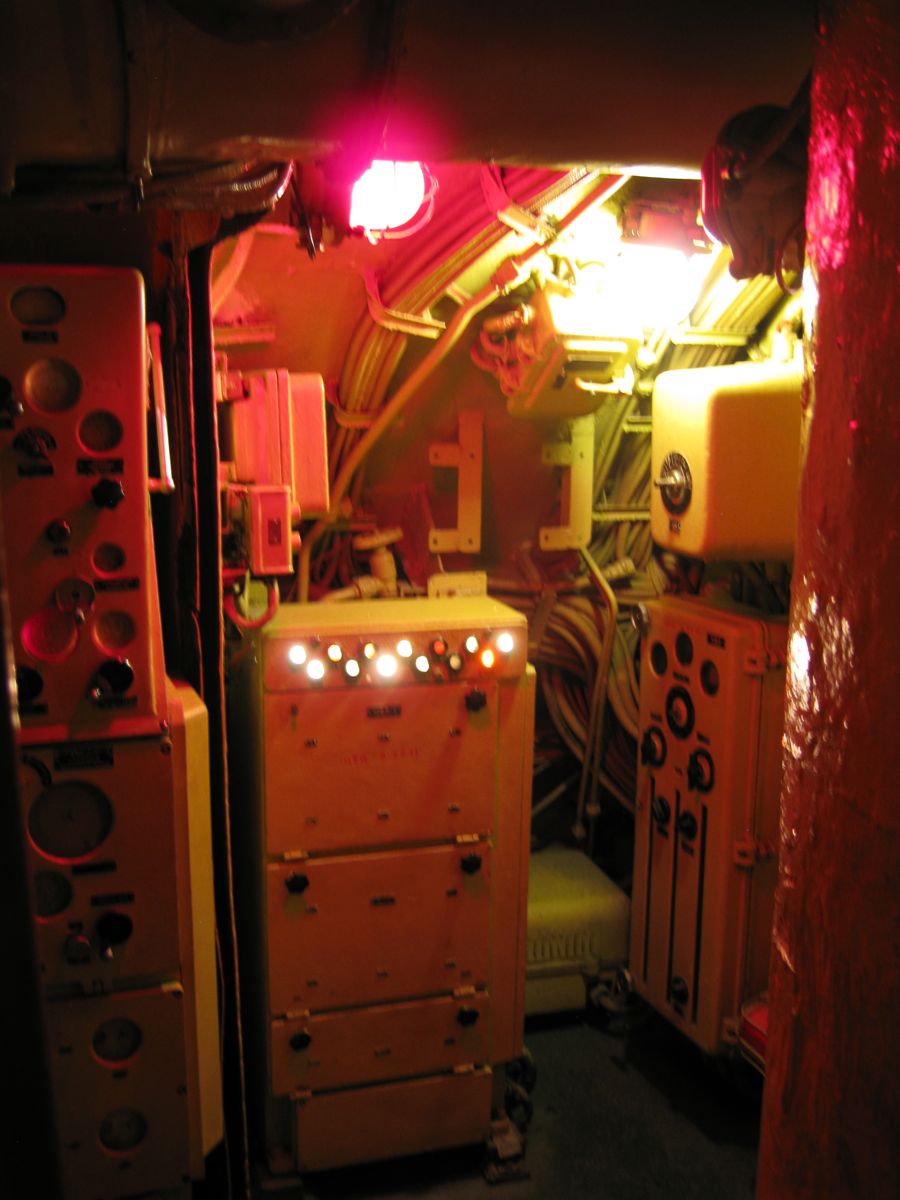
Radar operations center
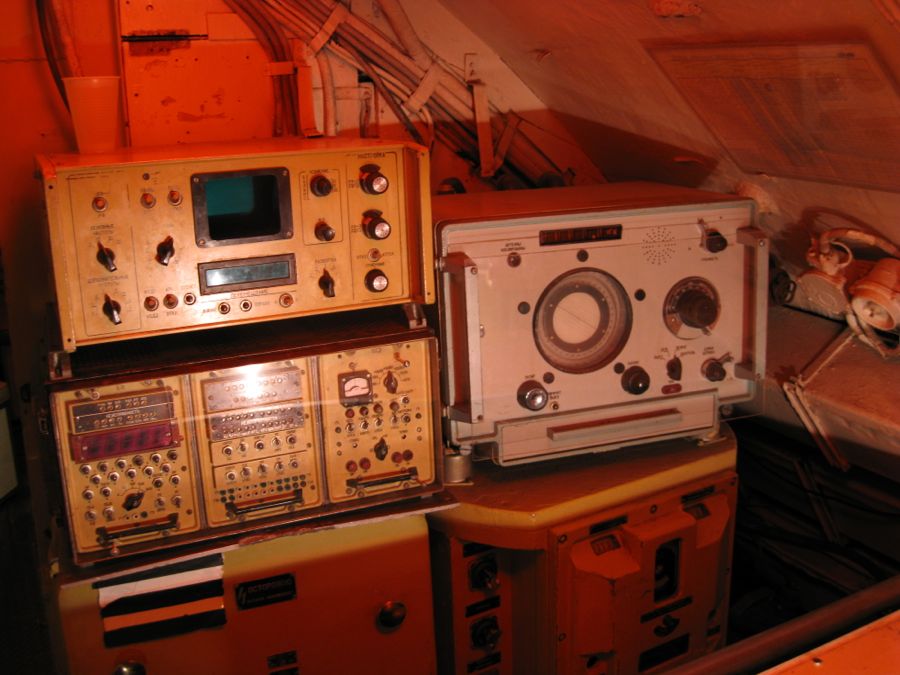
Radio room is across from the "Secret Room"

Additional radar equipment

Radio and crypto area
Into Compartment #4 - The Egine Room And Crews Quarters
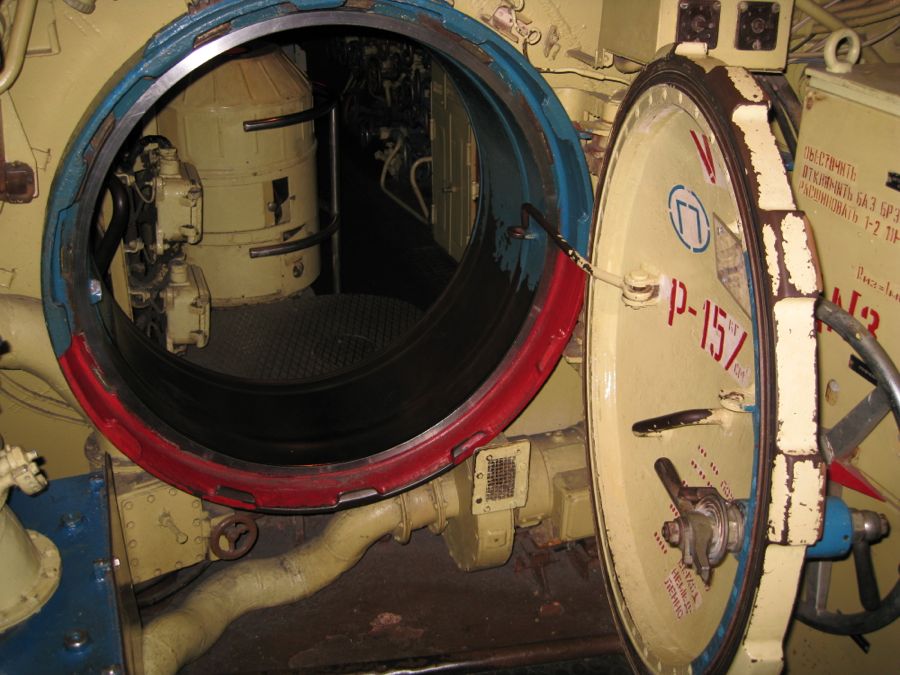
Crew area and engine room ahead

Not great rooms but they apparently worked

Bunks were shared between crew members
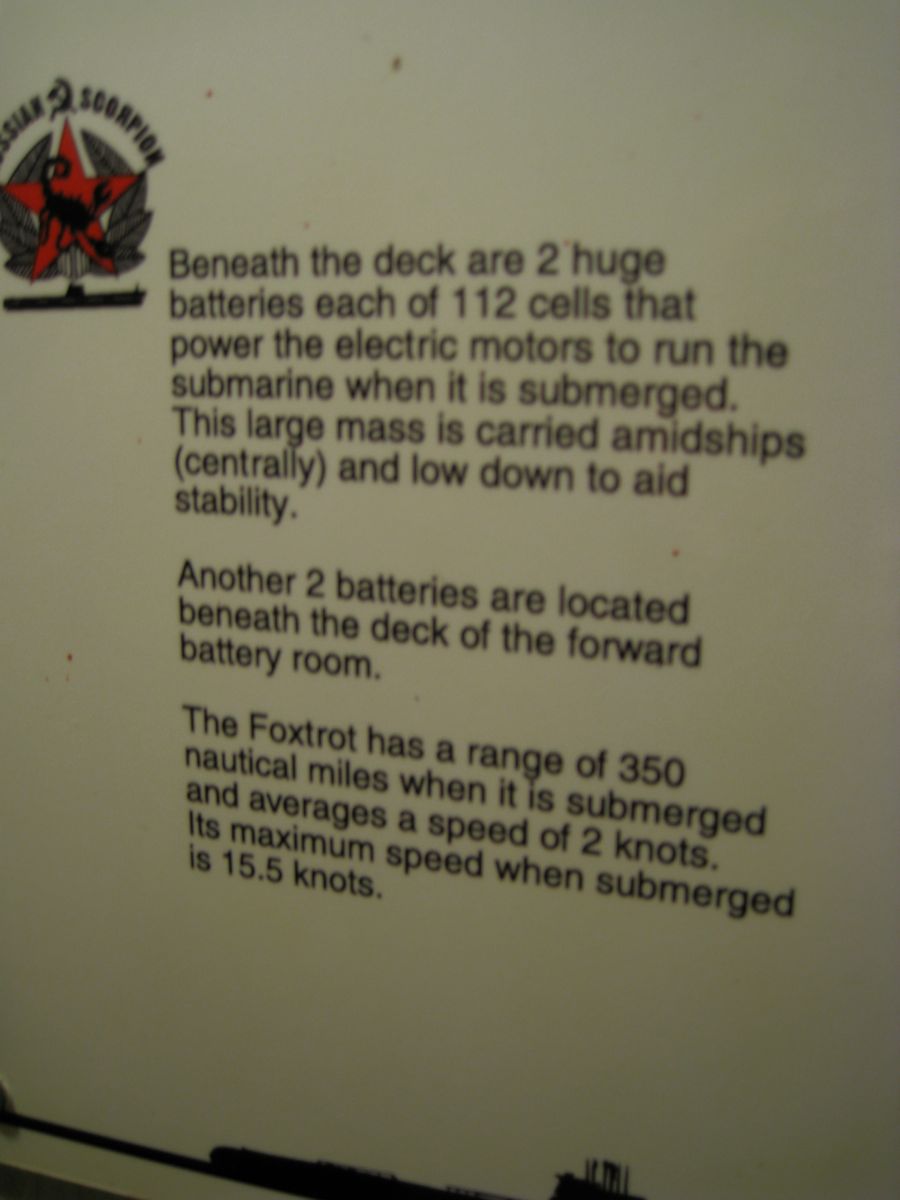

The galley was shared by four cooks and fed them men around the clock

Down into the engine room

The engine room was diesel and connected to the three electric motors which were BELOW the after torpedo room
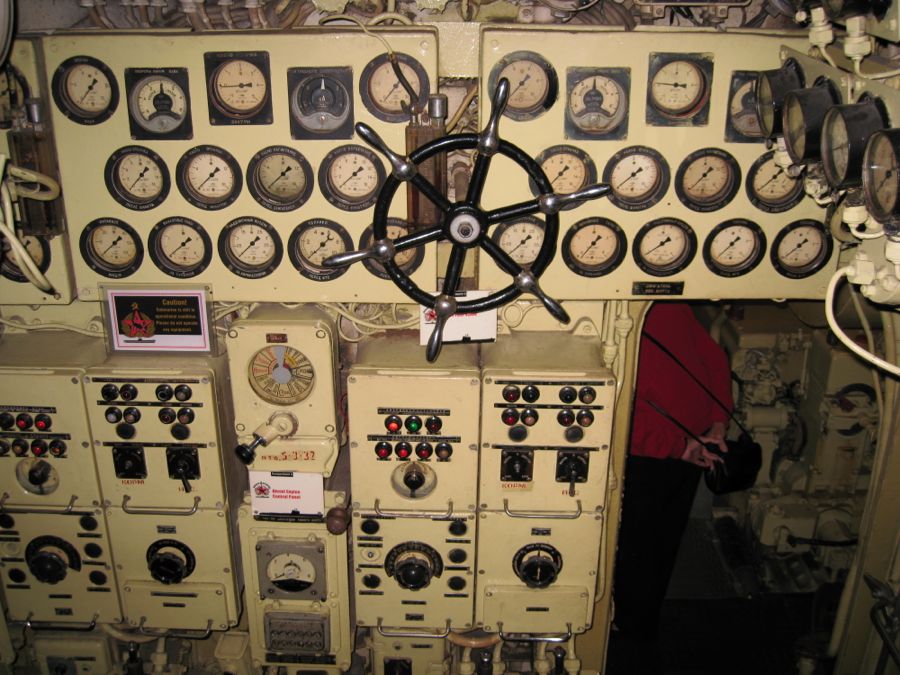
The Chief Engineers command center

One of the three diesel engines (with the valve covers removed)
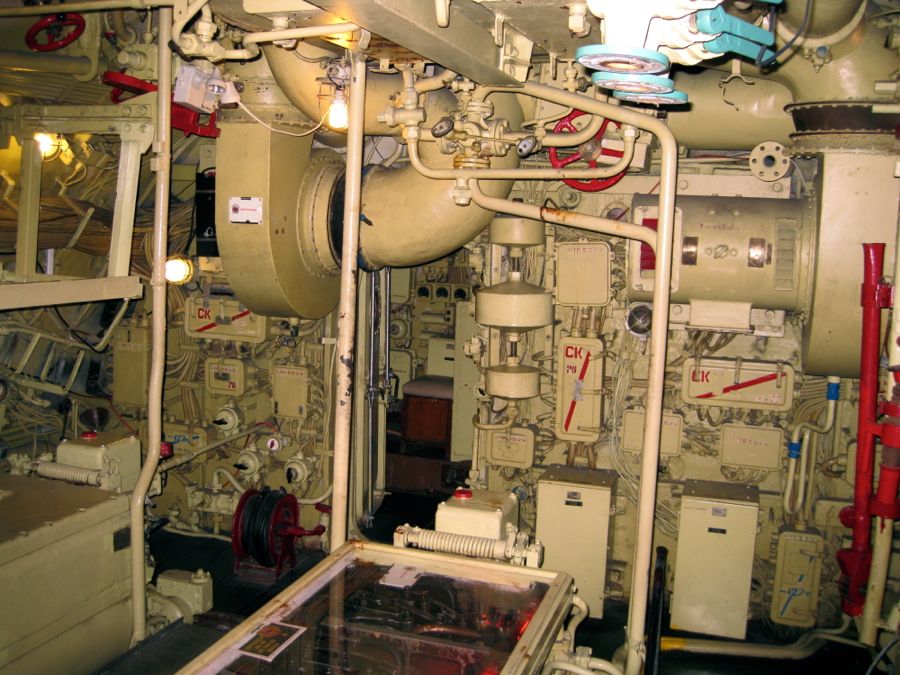
Three engines drove the propellers when on the surface and recharged the batteries as needed

Afte engine room was for auxiliary power and electric generation

Auxiliary diesel engine
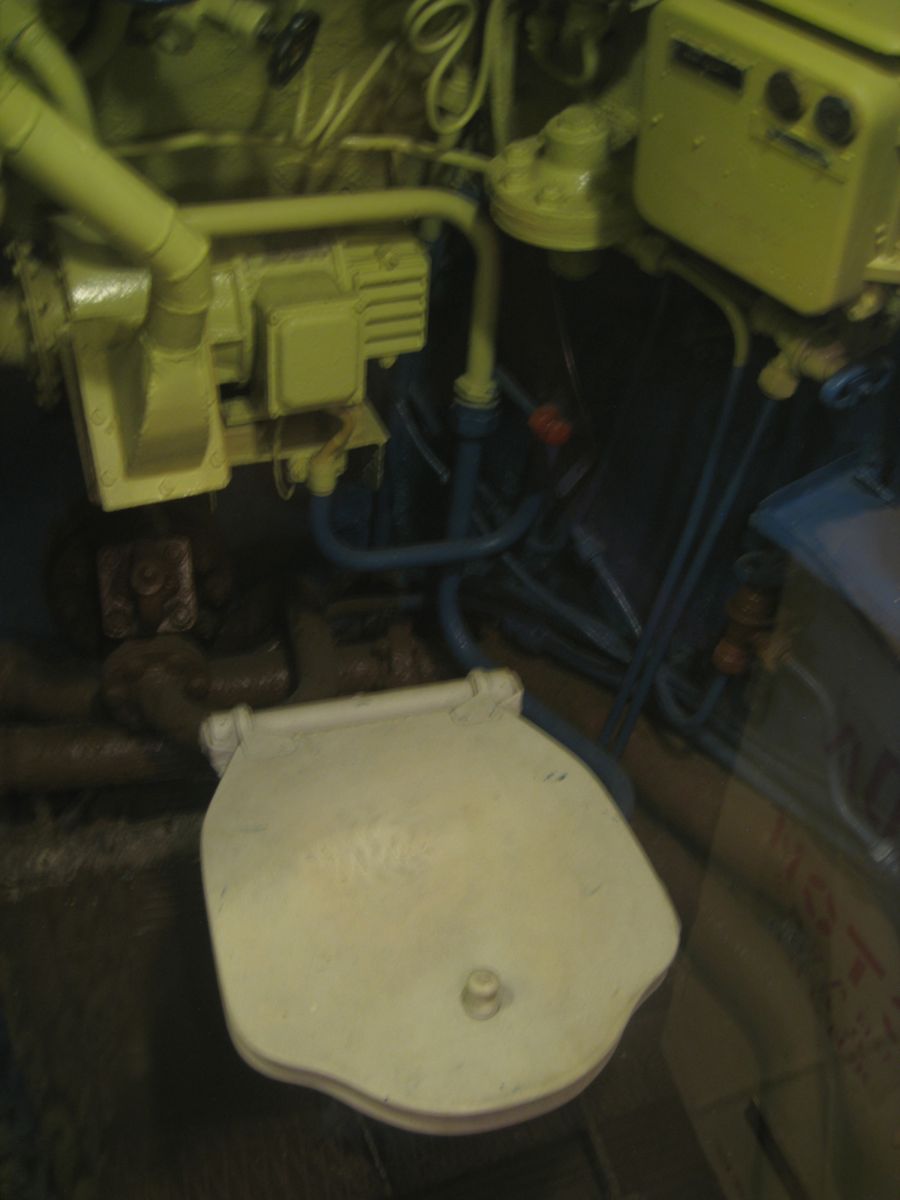
The second head....
Compartment #5 - Aft Torpedo Room

The aft torpedo room has the main shaft beneath it

Some crew slept in the back of the ship inside the aft torpodo room
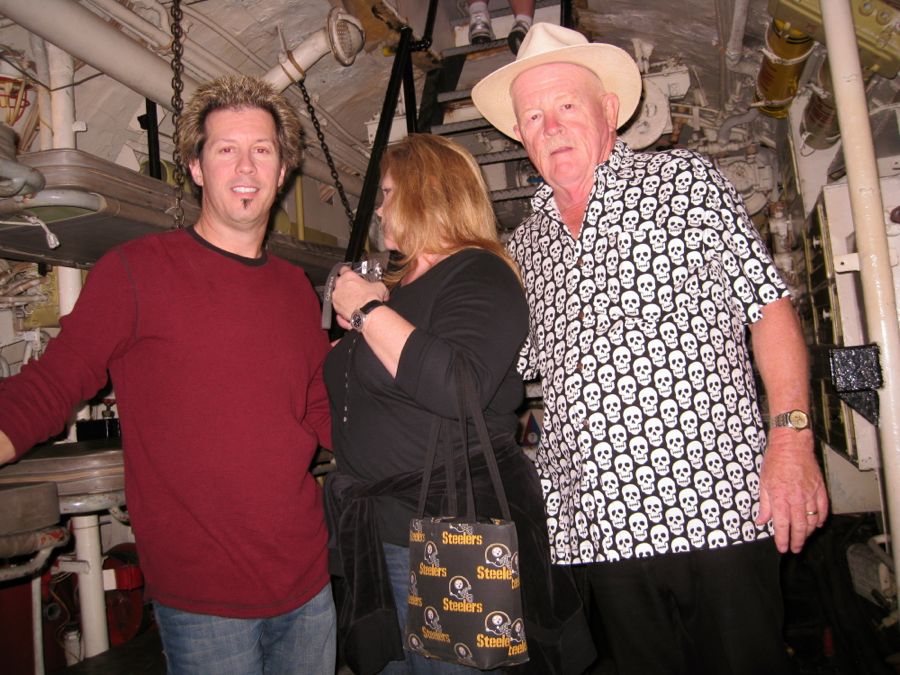
Hello there
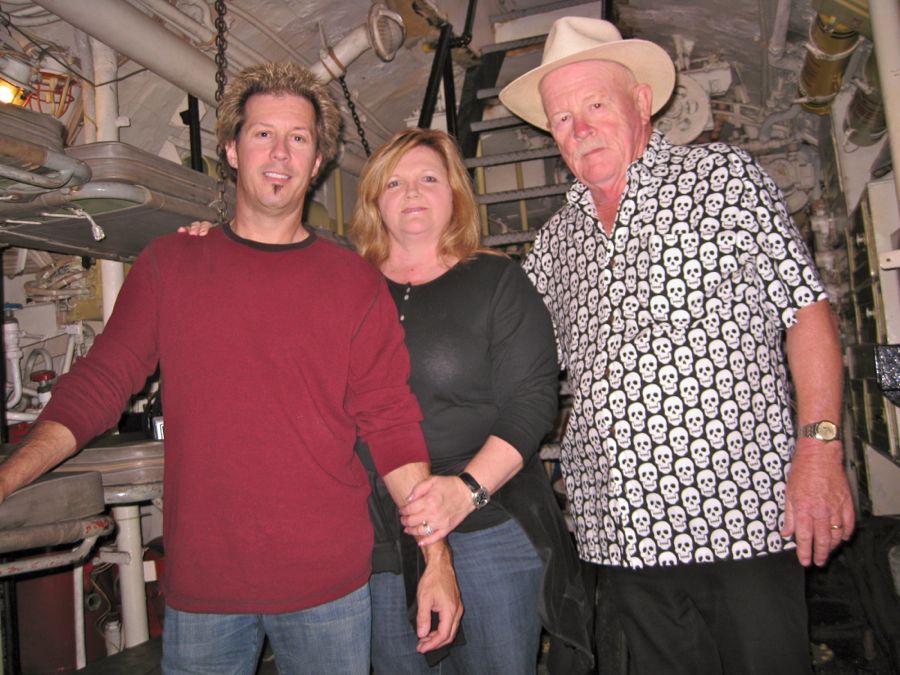
Not a great place to try and sleep

Thanks to another visitor we are all together

The stairs up

We are outta here
Heading To The All American Melodrama Theater
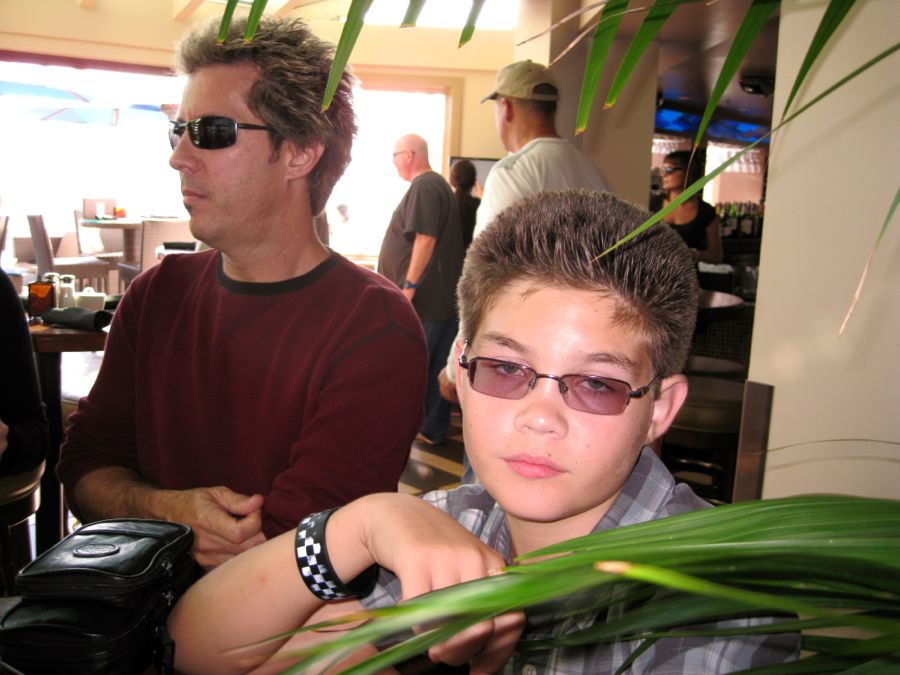
We stopped at the Lighouse for a glass of wine

The show must go on
Did You Know? - The term melodrama refers to a dramatic work which exaggerates plot and characters in order to appeal to the emotions. It may also refer to the genre which includes such works, or to language, behavior, or events which resemble them. It is also used in scholarly and historical musical contexts to refer to dramas of the 18th and 19th centuries in which orchestral music or song was used to accompany the action. The term originated from the early 19th-century French word mélodrame, which is derived from Greek melos, music, and French drame, drama (from Late Latin drāma, which in turn derives from Greek drān, to do, perform). An alternative English spelling, now obsolete, is "melodrame"

We had 4:30 today....

No flash allowed so....
